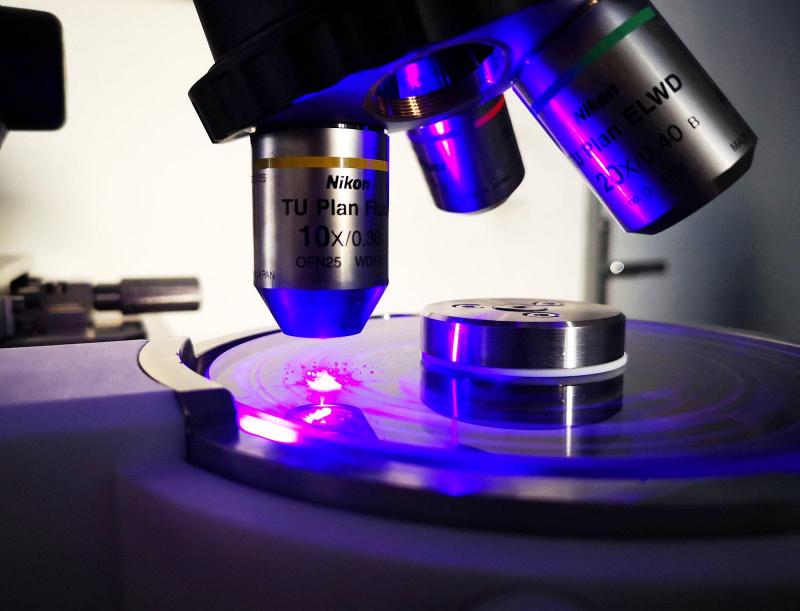Ideas and discoveries
A special tribometer customised by Brno scientists for a Japanese company

A unique optical tribometer combining two different measurement methods was created by experts from the Faculty of Mechanical Engineering in Brno. The contract was procured by a Japanese lubricant development company. No commercial supplier is able to produce a similar device. This was the third such contract for the Brno scientists, who have previously produced customised equipment for a large Japanese car company and a German university.
A tribometer is, in layman’s terms, a device designed to measure friction and wear between two surfaces. A Japanese company that develops grease lubricants was looking for a specially adapted one. They were unsuccessful on the market, so they turned to scientists from the BUT to build the necessary technology tailored to their needs.
“Our field of tribology is quite narrowly focused. Unlike the Life Sciences, where commercial equipment is available in large quantities and its level is close to the cutting edge of current science, in our field there is a bigger gap between what equipment can be bought commercially and what methods and equipment are used by scientific workplaces,” Petr Šperka from the Institute of Machine and Industrial Design at the Faculty of Mechanical Engineering BUT explains. In other words: if a company wants something extra, it has to have the device made to order.

There are only a few workplaces in the world that could build such a device.
However, this was not the first contract of this kind. In 2016, Brno engineers produced a unique tribometer for a large Japanese car company, and two years later another specific device went to a German university. “You can count the workplaces that could do this on one hand,” says Šperka, who collaborated with his colleagues on the development.

It took the researchers several months to develop the optical tribometer and it has been used in Japan for research and development of lubricants since March. “What I enjoy most is that our work is about solving a specific problem, in this case a technical and structural problem. We are basically building a prototype, but it has to work well,” Šperka concludes.
(ivu)
I don't call the students by name, I respect them very much, says Šárka Mikmeková
Matěj Štarha's love of technology led him to a deserted island
Smart dispatching system for virtual power plants co-developed by experts from FME BUT
Software as a bachelor thesis helps with soil erosion research
Auxetic material behaves differently than you would expect, says student Tomáš Vítek